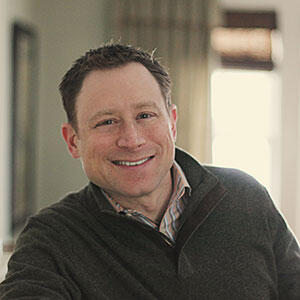Q&A with Dave Revsine, Author of ‘The Opening Kickoff: The Tumultuous Birth of a Football Nation’
When Princeton football hosted Yale last November, the Ivy League-leading Tigers drew nearly 15,000 fans to Princeton Stadium. But that turnout pales in comparison to the frenzy surrounding the 1893 Princeton-Yale game, a clash between two undefeated powerhouse programs. In his new book, The Opening Kickoff, author and sports broadcaster Dave Revsine opens with a chronicle of that Thanksgiving Day game in Manhattan, which drew an estimated 50,000 spectators and illustrated how “football had become a big business.” Even before the turn of the century, the sport’s headlines had a distinctly modern feel: disputes about eligibility and improper benefits, concerns about the safety of the game, and coaches who aimed to use their celebrity status to stay on top. Revsine spoke with PAW in July about the role that Princeton and other prestigious institutions played in the early history of college football.
Your book begins with the 1893 Princeton-Yale game, which followed a decade of rapid growth in the popularity of college football. What was behind this explosion of interest?
There are a couple of factors. From the schools’ point of view, I think they very quickly understood that it was a great public-relations vehicle and that it was a way for them to make money. So, you had this huge explosion in the number of colleges … and you had this period where people were founding colleges and then searching for students to serve. Obviously this wasn’t a problem with the Princetons, Yales, and Harvards of the world, but it was certainly a problem with other schools: How are we going to differentiate ourselves? And they quickly saw football as a way to do it.
From the fans’ point of view, I think the newspapers play a huge role. People had some leisure time on their hands that they hadn’t had before, and football gave people an entree into the social elite because these teams were associated with these universities. You might not be a Yale or a Princeton grad, but you could be a Yale or a Princeton fan — and being a fan, by association, made you a part of Yale or Princeton. I think that was appealing to a lot of people.
The powers of college football then were academically distinguished institutions — Harvard, Yale, and Princeton — yet the game then was exceptionally brutal and bloody. How did the leaders at these places reconcile the brutality of the sport with the larger mission of their universities?
It depended on the school. Harvard, for years, was sort of the conscientious objector — but the conscientious objector who still participated. The president of Harvard was adamantly opposed to football and resisted getting into the fray with Yale. Yale was the first football factory, and as I say in the book, Walter Camp was the foreman. At times [Yale] would deny the brutality of football. They would say that while it might be brutal the way that it’s played out in the hinterlands, the way that we play it — the science of the sport — is not very brutal.
There were internal debates for years. There were certainly people at each of those institutions who believed that they shouldn’t be involved in football. But what’s fascinating to me is that it is so similar to what is going on today. Within academia today, you have these debates about the role that football plays and the position of football in the American university. That was a concern from the get-go. Nothing that’s happening today is any different except the scope, and that the biggest players have changed. At a certain point, Yale, Harvard, and Princeton decided that they were essentially appalled by the world that they had created, and they were getting out of it.
Because of this connection with the great universities, other institutions saw football as a way to raise their profile, perhaps most notably the University of Chicago.
I might go so far as to say that the University of Chicago was built largely on football. They hired Amos Alonzo Stagg to be their football coach before they even opened the doors of the university. They played their first game the week the university began holding classes. They didn’t even have keys to open the doors, and yet they already had a football team. … One of the early professors said that the University of Chicago served two purposes: “to spread the light of knowledge over the western world and to lick Michigan.”
On top of that, of course, they had this system of sneaking guys into school who weren’t even remotely academically qualified. Walter Eckersall is the prime example I talk about quite a bit in the book. He was a three-time All-American … and at the point when his eligibility expires, he has 14 of the 36 credits necessary for graduation. A couple months later he’s expelled from the school without any explanation.
What is interesting about Chicago is that they were founded on football, and then they reached this point where they were no longer competitive. There’s this misconception because Jay Berwanger won the first Heisman Trophy [in 1935] that Chicago was good at that point. They were a .500 team. … The last year that they played [1939], they lost to Michigan 85-0. They didn’t give up football because they had found religion, so to speak. They gave it up because they were no longer competitive.
In 1905, Theodore Roosevelt had a famous meeting with leaders from the Big Three schools to discuss the safety of football, but the brutality continued, with 10 college football players dying in 1909. Why do you think college football was slow to change?
I think it was slow to change because the vested interest of the powerhouses was not to change it. The guy who comes off really badly in my book is Walter Camp. Walter Camp was the de facto head of the rules committee for years. Yale was the best team because they got the best players and they utilized the rules at the time to their advantage. And Camp was a one-man veto.
There basically had to be a backroom deal made because the game’s existence was threatened. They got Camp out of that veto-power position, and they instituted the forward pass, over his protestations.
If you talk about parallels, I look at what happened this past spring with Nick Saban and Bret Bielema basically saying they wanted to slow down spread offenses for the safety of the game. I don’t think they were doing it for the safety of the game — I think they were doing it because it didn’t play in their favor.
Your book highlights colorful stories from college football at the turn of the century. Were there any examples from your research that seemed particularly shocking to you?
The whole University of Chicago example floored me. I didn’t understand how invested they were in football.
I also use the example of James Hogan, who played for Yale. I think he’s a really interesting case. They broke all kinds of rules: They paid for his room at the nicest dorm on campus, he took his meals at the best dining hall, and on top of that, he had a portion of a cigarette concession at one of the local grills. At the end of his career, the Yale boosters sent him on an all-expenses-paid trip to the Caribbean as thanks for his service. So you see stuff like that and you think, “I can’t believe that this was going on 110 years ago, and I can’t believe it was going on at Yale.” And yet everywhere you look, this kind of thing was going on.
The Princeton team in 1889 included guys that were essentially recruited. They played for other teams in years before. “Monte” Cash [Class of 1891] was living in Wyoming and showed up on campus with a deck of cards and two pistols.
I always assumed that it was pure — that it was these well-mannered Ivy Leaguers taking a break from their Shakespeare recitations to go out and kick a ball around for a few hours in front of a few hundred people, and that somehow it was changed or corrupted along the way. But what I came to realize is that it was never that way.
Interview conducted and condensed by Brett Tomlinson.













No responses yet